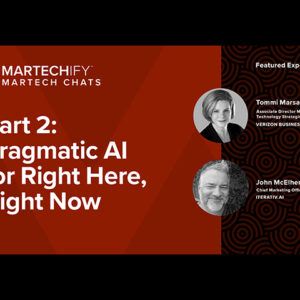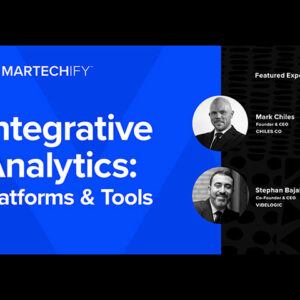Why Account-Based Marketing is Not “Marketing As Usual”
- Lorena Harris, Senior ABM Strategist, Ascend Marketing
- Account Based Marketing (ABM), Managing Org Transformation, Sales and Marketing Orchestration
ABM: Debunking common misconceptions
Most marketers think they have a pretty good idea of what ABM is about. After all, it’s been a buzz word for years. But I’m constantly surprised at how broad the working definition is. Many leaders think ABM is a technology. Many think it’s about selecting some accounts they want to sell to. And the majority think it’s “marketing as usual (MAU)” with an account focus.
Want to understand what ABM really is? Let’s start by defining what it is NOT…
- ABM is NOT a tech-only solution.
- ABM is NOT another marketing fad.
- ABM is NOT a silver bullet.
ABM truth #1: Not a tech-only solution
Misconception: ABM is a technology purchase… there’s an app for that.
Reality: ABM is a discipline centered on customer insight, personalization, and cross-functional collaboration.
Supporting data
- Investing time in manual processes like understanding your Ideal Customer Profiles (ICPs), farming your data, and tailoring content can eliminate the need for expensive ABM software, which may offer features that aren’t always necessary for all businesses (metadata.io).
- You can leverage existing marketing technologies like CRM systems, email marketing platforms, and sales automation tools to execute ABM strategies. Later you can add other platforms like Bombora for intent data without needing a dedicated ABM platform (42DM).
Key points
- Technology enables ABM but cannot replace the need for human communication and strategic alignment.
- Successful ABM can start with existing tools, then get more sophisticated.
ABM truth #2: Not another marketing fad
Misconception: ABM is just another marketing tactic.
Reality: ABM is a long-term, account-centric form of demand generation that involves the entire organization. Sales and Marketing need to work together to be successful.
Supporting data
- Organizations with aligned sales and marketing functions report up to 208% more revenue from their marketing efforts (LinkedIn).
- Businesses that align these departments can achieve up to 19% faster revenue growth and are 15% more profitable compared to those that are not aligned. (Upgrade Marketing Skills).
Key points
- ABM focuses on expanding the customer base and nurturing net-new clients through a collaborative approach.
- Effective ABM requires breaking down silos and aligning all functions to meet customer needs at every stage.
ABM truth #3: Not a silver bullet
Misconception: ABM is a quick fix for generating fast revenue.
Reality: ABM is a long-term investment requiring sustained effort and skill development. Doing ABM “on the side” is a common cause of failure since ABM takes a village, not an outpost.
Supporting data
- Companies that have used ABM for at least one year have seen a 10% increase in revenue while 19% reported more than 30% revenue growth. (Demand Metric).
- Companies that align their sales and marketing teams with ABM see a 67% improvement in deal closing rates over a three-year (Rollworks).
Key points
- Developing an effective ABM program takes time. Throwing money at it won’t generate miracles.
- If ABM skills don’t exist in-house, consider external consulting to accelerate ABM skill adoption and organizational change.
ABM — not just another campaign type
Definition: ABM is a form of demand generation marketing but with a unique, strategic approach.
Key differences:
- ABM is not technology-first, but technology-enabled.
- Requires comprehensive marketing skills and cross-functional collaboration.
- Focuses on long-term account value, not short-term gains.
Conclusion
Call to action: Rethink your approach to ABM.
Recommendation: Build institutional knowledge and create a customer-first culture.
Long-term goal: Develop a sustainable ABM program that maximizes lifetime value for current and future accounts.
It’s time to step back and re-think your point of view on ABM. Before you rush ahead, build the institutional muscle memory required for long-term ABM program success. Create a collaborative, customer-first culture that delivers a lifetime of value for all the accounts you have now and want to serve in the future.













